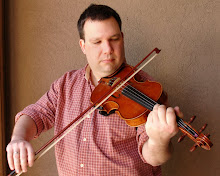Along with the soundpost, the bridge maybe the most important component to getting the best sound from a violin. It takes a great skill, intuition and patience to bring all the elements together to make the most of a violin's sound. I wonder how many violins are dismissed by a player simply because it was poorly set up and adjusted. Here is a slide show on Flickr of Ben's beautiful bridge work.
The next time you are examining a violin, look at the bridge. Is it crisply carved? Do the feet fit the belly perfectly? These are signs that the bridge cutter made the effort to ensure you are getting the best sound even before you begin to play. The bridge blank should preferably be an Aubert "De Luxe" or "Super Luxe" bridge. Examine the wood figure on the bridge. The back side (facing the player and bearing mfr. stamp) should have a straight, uninterrupted flame. The front side should have a field of evenly sized small flecks. This is an ideal and some slight deviation is acceptable. Most importantly, when examined from the side, the medullary rays, which appear as very thin lines in the the wood must be perfectly vertical and parallel with the back edge of the bridge.
A Perfect Bridge Blank
Note that bridge manufacturers do not grade their bridges by the consistancy of figure, but mostly by wood age and treatment. It is up to the violin maker to select desirable bridges from a supplier's batch. I select bridges the same way I select tonewood (after all, the bridge is the smallest piece of tonewood). I go to a supplier and sort through the bridges, selecting the ones that meet my standard. I hang them in the sun for a year to season before I use them.
Below are a few of my bridge cutting tools.
Diagram on bridge cutting from my notebooks. The red hatched areas show areas to cut from the blank and the numbers are desired thicknesses marked in milimeters.





